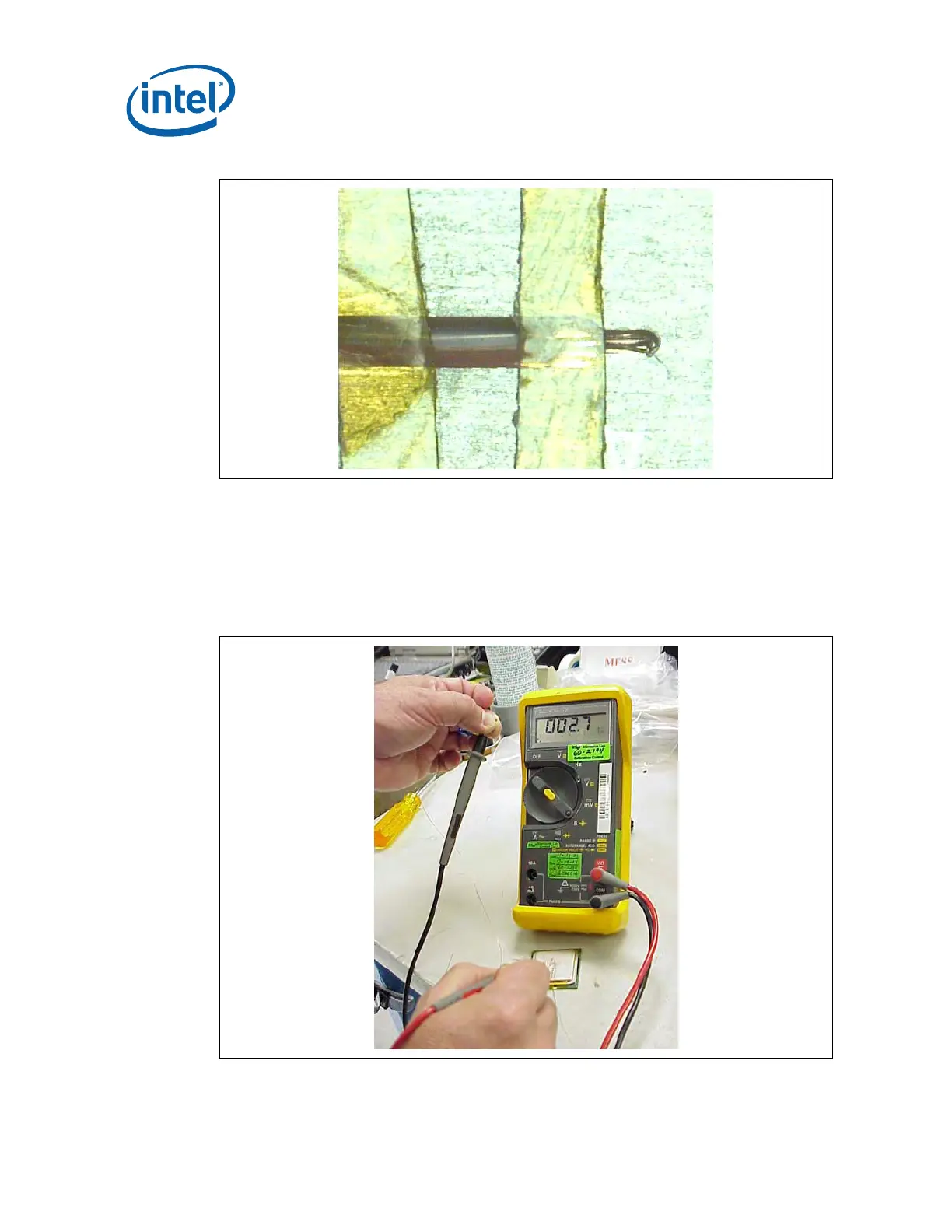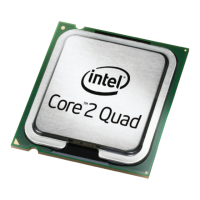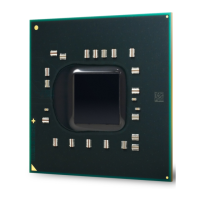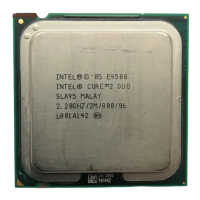Case Temperature Reference Metrology
86 Thermal and Mechanical Design Guidelines
Figure 41. Third Tape Installation
12. Place a 3
rd
piece of tape at the end of the step in the groove as shown in
Figure 41. This tape will create a solder dam to prevent solder from flowing into
the larger IHS groove section during the melting process.
13.
Measure resistance from thermocouple end wires (hold both wires to a DMM
probe) to the IHS surface. This should be the same value as measured during the
thermocouple conditioning Section D.5.1, step 3 (Figure 42)
Figure 42. Measuring Resistance between Thermocouple and IHS

